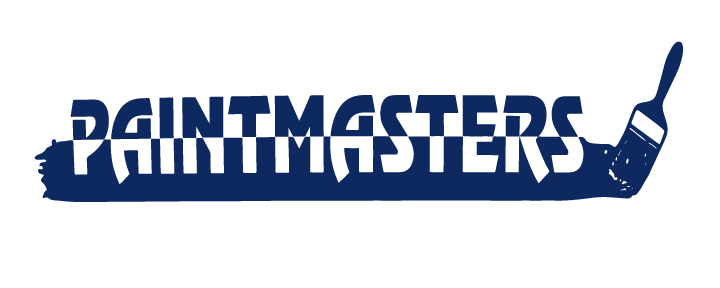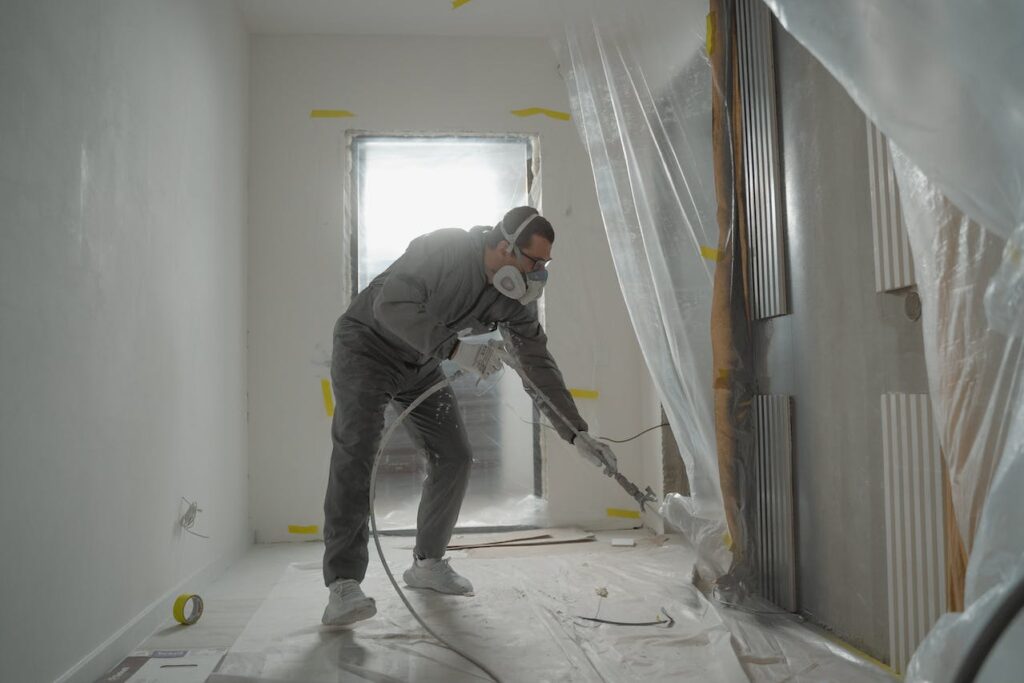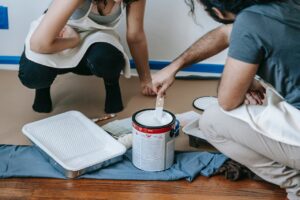Unveiling the creative partnership between painters and designers, this blog post explores the dynamic collaboration that takes place behind the scenes. From photoshoots to theater productions, painters and designers join forces to create stunning results. This inside look reveals the magic that happens when these two artistic disciplines merge their talents. Whether it’s a photographer capturing a painter’s work or a designer bringing a painter’s vision to life on stage, the synergy between artists and designers is truly remarkable. Join us as we dive into the world of collaboration, where imagination meets craftsmanship for exceptional outcomes.
Table of Contents
ToggleImportance Of Collaboration For Stunning Results
Collaborative efforts between painters and designers are the secret sauce behind the creation of breathtaking artistic outcomes. When these two creative forces join hands, their synergy elevates their work to new heights, resulting in stunning results that captivate the viewer’s imagination.
The power of collaboration lies in its ability to enhance the visual impact of paintings and designs. By combining their unique skills and perspectives, painters and designers bring a harmonious blend of color, form, texture, and composition to their creations. This collaborative approach ensures that every element is carefully considered and thoughtfully executed, resulting in a cohesive and visually striking piece.
Collaboration also unlocks the power of teamwork in creating awe-inspiring results. When painters and designers come together as a team, they support each other throughout the creative process. They offer feedback, share ideas, and provide valuable insights that push the boundaries of what is possible. This collaborative environment fosters creativity and allows for experimentation with different techniques and styles.
One key advantage of collaboration is that it saves time by leveraging everyone’s expertise. Instead of working in isolation, painters and designers can divide tasks based on their strengths, allowing them to work more efficiently. For example, while a painter focuses on bringing colors to life on canvas, a designer can contribute by conceptualizing the overall layout or selecting complementary elements such as typography or patterns.
The Process Of Collaboration Between Painters And Designers
Step-By-Step Breakdown Of How Painters And Designers Collaborate Effectively
Collaboration between painters and designers is a dynamic process that involves a step-by-step breakdown to ensure stunning results. It all begins with a shared vision, where the painter and designer align their creative ideas and goals. They brainstorm together, exchanging thoughts on color palettes, themes, and overall aesthetics.
Once the initial concept is established, the painter starts bringing it to life on canvas or other mediums while the designer focuses on creating complementary visuals such as sketches or digital mock-ups. This simultaneous work allows for constant feedback and adjustments to be made throughout the project.
Understanding The Seamless Workflow Between Artists And Designers In A Collaborative Project
In a collaborative project, artists and designers work hand in hand, seamlessly blending their skills to achieve outstanding outcomes. The workflow typically involves regular meetings or virtual check-ins where both parties discuss progress, address challenges, and make necessary modifications.
The artist’s expertise lies in translating abstract concepts into tangible artwork using various techniques like brushwork, layering, or texture application. On the other hand, designers contribute by ensuring that the artwork aligns with the intended purpose or context of its application. They may provide input on composition, layout, or design elements to enhance visual impact.
From Initial Concept To Final Execution: Unraveling The Collaborative Journey
The collaborative journey from initial concept to final execution encompasses several stages that demand close cooperation between painters and designers. After refining the initial idea together, they move forward with executing their respective tasks while staying connected through open communication channels.
Throughout this process, there are continuous iterations as both parties refine their work based on feedback received from each other. This iterative approach ensures that every aspect of the artwork meets expectations and achieves desired results before reaching completion.
Exploring The Tools, Techniques, And Strategies Employed By Painter-Designer Duos
Painter-designer duos employ a wide range of tools, techniques, and strategies to enhance their collaborative efforts. These may include:
- Utilizing digital software for creating and sharing visual concepts.
- Incorporating mood boards or inspiration galleries to align on the desired aesthetic.
- Experimenting with different materials, mediums, or textures to achieve desired effects.
- Employing effective project management tools for seamless coordination and documentation.
By leveraging these resources, painters and designers can streamline their collaboration process and bring out the best in each other’s skills and creativity.
Insights Into The Behind-The-Scenes World Of Artists And Designers Collaborating
Peeking Into The Behind-The-Scenes Dynamics Of Painter-Designer Partnerships
Collaboration between painters and designers is like a secret dance happening backstage that sets the stage for stunning results. It’s all about blending the artistic vision of a painter with the design expertise of a designer, creating a harmonious fusion that captivates audiences.
In this hidden realm, artists and designers come together to explore ideas, exchange concepts, and bring their talents to life. The studio becomes a space where creativity flourishes, as painters and designers work side by side, brainstorming and refining their visions.
Uncovering The Hidden Aspects That Contribute To Successful Collaborations
Successful collaborations between painters and designers require more than just talent; they demand open communication, trust, and mutual respect. Artists need to share their creative process with designers while allowing them space to contribute their own unique perspective.
One key aspect is understanding each other’s language. Painters may use terms like brushstrokes or color palettes while designers may discuss layouts or typography. Bridging this gap helps create a shared vocabulary that ensures effective collaboration.
Another crucial element is embracing flexibility. Both parties must be willing to adapt their ideas and make compromises for the greater good of the project. This flexibility allows for innovative solutions that neither artist nor designer could have achieved alone.
Secrets Revealed: What Really Goes On During A Painter-Designer Collaboration
During these collaborations, artists and designers engage in an intricate dance of inspiration, critique, and refinement. They bounce ideas off each other, providing feedback that pushes the boundaries of their work.
The process often starts with brainstorming sessions where both parties share initial concepts. From there, they dive deep into discussions about color schemes, composition choices, or even specific techniques to be employed.
As they progress towards finalizing designs or artworks, constant iteration takes place. Feedback loops are essential in refining the work, ensuring that it aligns with the intended vision. This iterative process helps artists and designers fine-tune their creations until they achieve the desired impact.
Gaining Exclusive Access To Witness Firsthand How Artists Merge Their Talents With Design Expertise
Exploring the behind-the-scenes world of painter-designer collaborations grants us a privileged glimpse into the creative process. We get to see how these talented individuals transform ideas into tangible works of art that captivate audiences.
By witnessing this collaboration firsthand, we gain a deeper appreciation for the artistic process and understand the intricate dynamics at play. It’s an opportunity to celebrate the merging of two worlds—the artist’s imagination and the designer’s technical prowess—to create something truly remarkable.
So next time you admire a stunning painting or a beautifully designed space, remember that there is often an unseen partnership behind it all—a collaboration between painters and designers that brings dreams to life.
Exploring Makersplace Profiles Of Crazy Pepe And Error Skull
Crazypepe’s Captivating Artwork On Makerspace
Let’s take a closer look at the captivating artwork of Crazy Pepe, a talented painter whose creations can be found on the Makersplace platform. Their unique style and attention to detail make their work truly stand out. With each stroke of the brush, Crazy Pepe brings their imagination to life, creating stunning pieces that captivate viewers.
Error Skull’s Innovative Design Portfolio On Display
Now let’s shift our focus to Error Skull, an innovative designer who showcases their portfolio on Makersplace. Their designs push boundaries and challenge traditional norms. Error Skull’s ability to blend aesthetics with functionality is truly remarkable. From sleek user interfaces to visually striking graphics, their work leaves a lasting impression.
Delving Into Crazypepe’s Unique Painting Style
Crazypepe’s painting style is as unique as it gets. Their use of vibrant colors and intricate details creates a sense of depth and emotion in each piece. Whether it’s a serene landscape or a thought-provoking portrait, Crazypepe knows how to evoke powerful emotions through their art.
Discovering Error Skull’s Cutting-Edge Design Aesthetic
Error Skull’s design aesthetic is cutting-edge and forward-thinking. They seamlessly incorporate technology and modern elements into their designs, resulting in visually stunning and impactful creations. From futuristic logos to immersive digital experiences, Error Skull pushes the boundaries of design innovation.
Both Crazy Pepe and Error Skull bring something special to the table with their respective artistic talents. While Crazypepe mesmerizes us with their captivating paintings, Error Skull dazzles us with their innovative design concepts. Together, they exemplify the incredible collaboration between painters and designers that takes place behind the scenes in creating stunning results.
Meaningful Conversations Fueling Artist Collaborations
Open Dialogue And Communication
In the world of art, collaboration between painters and designers is a dynamic process that relies heavily on open dialogue and communication. These artists come together to create stunning results by exchanging ideas, sharing insights, and discussing their vision for the project at hand.
Sparking Creativity And Innovation
Meaningful conversations serve as the fuel that ignites creativity and innovation in collaborative projects. When painters and designers engage in deep discussions, they tap into each other’s expertise, drawing inspiration from different perspectives. This exchange of ideas often leads to fresh concepts, unique approaches, and groundbreaking artistic endeavors.
Nurturing Productive Idea Exchange
To foster productive collaborations, it is crucial for artists and designers to nurture a space where ideas can flow freely. They must create an environment where everyone feels comfortable expressing their thoughts without judgment or restriction. By actively listening to one another and valuing each contribution, a fruitful exchange of ideas can flourish.
Shared Vision And Mutual Understanding
Successful collaborations thrive when there is a shared vision between painters and designers. Through meaningful conversations, these artists develop a mutual understanding of the desired outcome. This shared vision acts as a guiding force throughout the creative process, ensuring that every brushstroke or design element aligns with the overall objective.
By embracing open dialogue, sparking creativity through conversation, nurturing productive idea exchanges, and fostering shared visions with mutual understanding—painters and designers can unlock their full potential as collaborators. The power lies in their ability to communicate effectively—a skill that allows them to transform blank canvases into works of art that captivate audiences worldwide.
Impact Of Painter And Designer Collaboration
Collaboration between painters and designers is the secret ingredient that brings about stunning results. When these two creative forces come together, magic happens. The painter’s ability to bring colors to life on canvas, combined with the designer’s keen eye for aesthetics and composition, creates a harmonious blend of artistry that captivates the viewer.
Imagine a symphony where each instrument plays its part to create a mesmerizing melody. Similarly, when painters and designers collaborate, their individual talents merge seamlessly, resulting in artwork that goes beyond expectations. The painter adds depth and emotion to the designer’s vision, while the designer enhances the painter’s work with thoughtful placement and balance.
So next time you find yourself admiring a breathtaking piece of art or design, remember the power of collaboration behind it. If you’re an artist or designer yourself, consider reaching out to someone from the other field and explore how your combined creativity can elevate your work even further.
Looking To Elevate Your Home’s Aesthetics Beyond Just A Paint Job?
Imagine the synergy of a skilled painter collaborating with an interior designer. At PaintMasters, that dream is our reality. Established in 1994, our legacy in Concord, California and the broader Contra Costa region speaks to our commitment. From impeccable exterior painting to intricate interior detailing, we pride ourselves on getting it right the first time. And it doesn’t stop at painting – our expertise spans acoustic removal, drywall repair, and texturing, ensuring a holistic solution for all your home improvement needs.
But here’s our standout offering: our adeptness at blending painterly precision with design inspiration. We not only refresh spaces, but we infuse them with character, be it homes or commercial establishments like chic restaurants. Yearning for a statement wall or dreaming of a deck that mirrors nature? Our staining services for walls, cabinets, doors, and decks hold the promise of transformation.
Let PaintMasters redefine and rejuvenate your spaces with unparalleled finesse. Reach out now, and embark on a journey of design re-imagination. Your dream home awaits!


